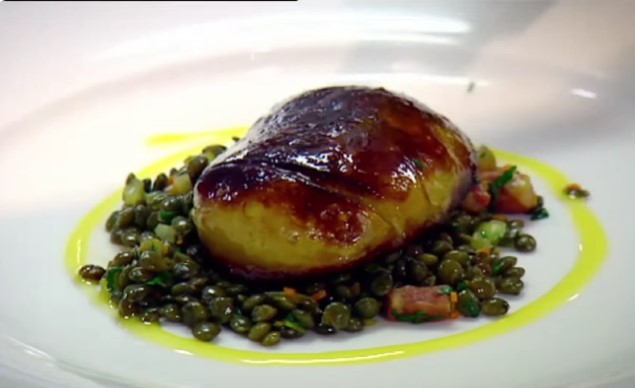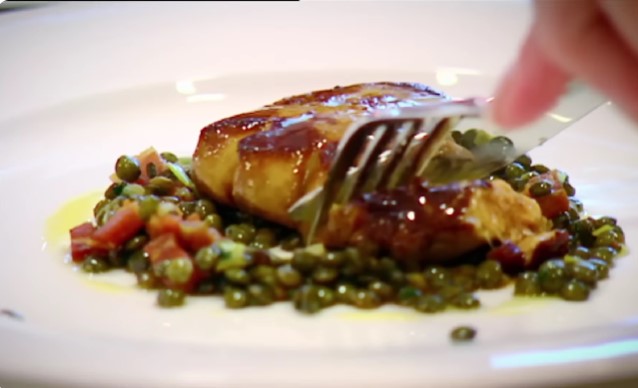Foie Gras Nutrition Facts
Descending into the intricate world of foie gras nutrition facts, it's far more than a decadent gourmet delight. What if we told you this culinary gem also harbors a tantalizing secret, a unique nutritional profile that might turn your perspective upside down?
Foie gras, a luxury delicacy made from the liver of specially fattened ducks or geese, is renowned for its rich, buttery flavor and delicate texture. This culinary treasure, deeply rooted in French cuisine, is celebrated in gourmet circles worldwide. However, beyond its exquisite taste, foie gras has a nutritional profile that is both intriguing and important to understand, particularly for those who enjoy indulging in this decadent treat.
In this article, we’ll dive deep into the nutrition facts of foie gras, exploring its caloric content, vitamins, fats, and other nutrients. Whether you’re a seasoned foodie or someone curious about trying foie gras for the first time, this guide will provide you with the essential information you need to enjoy this dish with knowledge and awareness.

Nutritional Overview
Calories and Macronutrients
Foie gras is a high-calorie food, primarily due to its significant fat content. A 100-gram serving of foie gras can provide anywhere between 450 to 500 calories. This makes it a very energy-dense food, which is why it’s often served in small portions.
- Calories: 450-500 per 100 grams
- Protein: 7-9 grams
- Fat: 40-45 grams
- Saturated fat: 15-20 grams
- Monounsaturated fat: 20-25 grams
- Carbohydrates: Less than 2 grams
Vitamins and Minerals
Despite its high-calorie content, foie gras is also a rich source of essential vitamins and minerals:
- Vitamin A: Supports vision and immune function.
- Vitamin B12: Crucial for red blood cell formation and neurological function.
- Iron: Vital for oxygen transport in the blood.
- Zinc: Important for immune health and metabolism.
Cholesterol and Fats
Foie gras is notably high in cholesterol, with a 100-gram serving containing about 300-500 milligrams. This is why moderation is key, especially for those with dietary restrictions related to cholesterol.
- Cholesterol: 300-500 milligrams per 100 grams
- Fats: Rich in both monounsaturated (heart-healthy) and saturated fats.
Omega-6 Fatty Acids
Foie gras contains omega-6 fatty acids, which are essential for brain function, skin health, and overall development. However, balancing omega-6 with omega-3 intake is important to maintain optimal health.
Health Considerations
Consumption in Moderation
Given its high caloric and fat content, foie gras should be enjoyed in moderation. Pairing it with lighter foods or incorporating it as part of a balanced meal can help mitigate its rich profile. It is also worth considering the ethical implications of foie gras production, which involves controversial force-feeding techniques.
Culinary Pairings
Foie gras pairs beautifully with sweet accompaniments like fruit compotes or balsamic reductions, enhancing its luxurious taste while providing a balance of flavors. It’s commonly served as a pâté, seared, or incorporated into gourmet dishes.

Frequently Asked Questions
Is foie gras healthy to eat?
Foie gras is rich in vitamins and essential fats but is also high in calories and cholesterol. It’s best enjoyed in moderation as part of a balanced diet.
How is foie gras produced?
Foie gras is produced by fattening the liver of ducks or geese through a process called gavage. This method has been the subject of ethical debates due to concerns over animal welfare.
Can foie gras be part of a healthy diet?
Yes, but it should be consumed sparingly due to its high fat and cholesterol content. Pairing it with nutrient-dense, low-calorie foods can help balance its richness.
By understanding the nutritional content of foie gras, you can make informed decisions about how to enjoy this luxurious delicacy in a way that aligns with your health goals and ethical considerations.
Read also: Red Steakhouse menu prices





